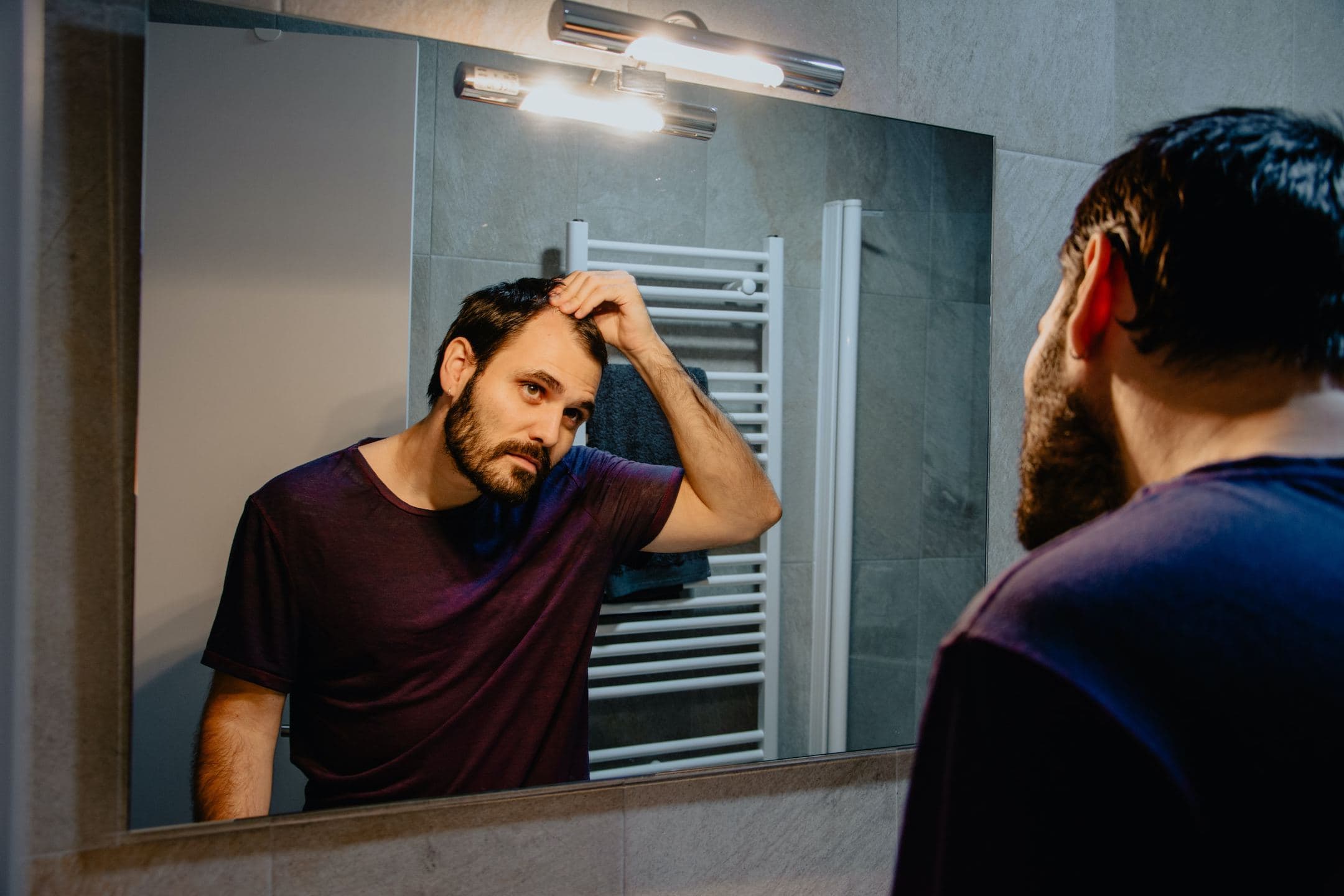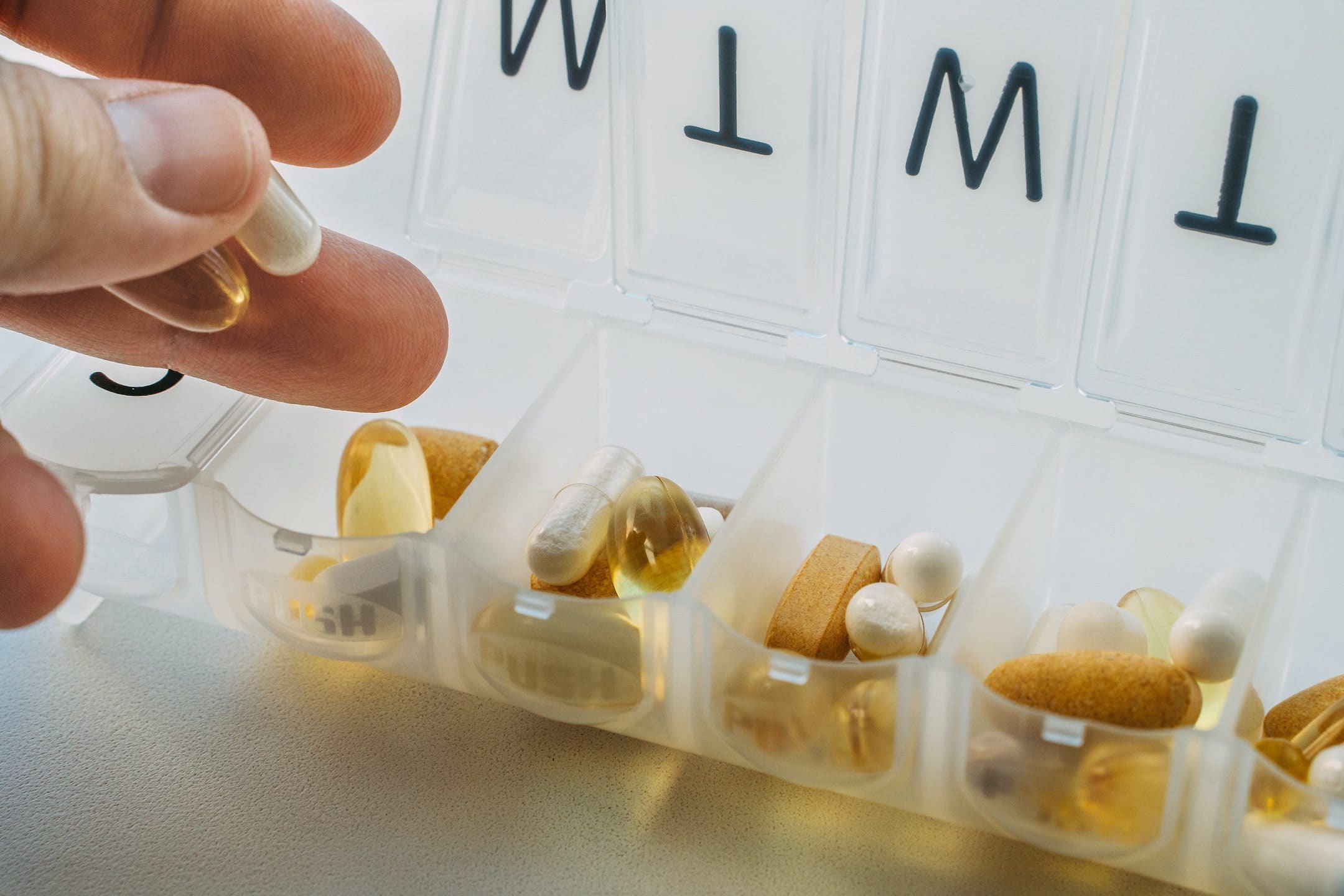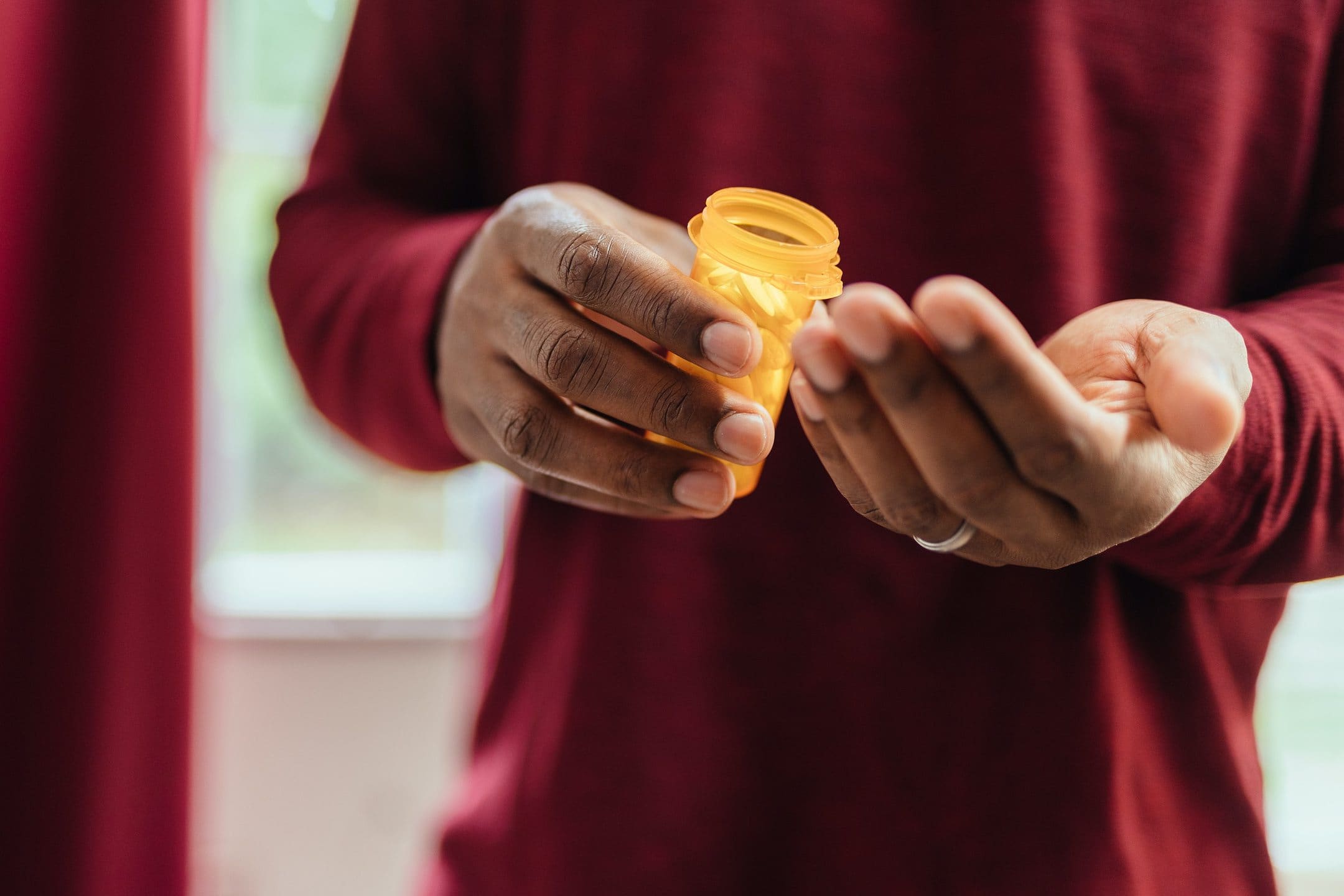If you’re starting to lose your hair or have symptoms of an enlarged prostate, like pain while urinating, you’re not alone. Male-pattern baldness and benign prostatic hypertrophy (enlarged prostate, also known as BPH) each affect more than half of men over age 50.
Another similarity between these two conditions? Both can be treated with a medication called finasteride.
Before taking finasteride, it’s important to understand how it may affect your fertility, especially if you’re trying to start or grow your family. Keep reading to find out how finasteride works and its potential effects on male fertility and sexual function.
What is finasteride?
Finasteride is a prescription oral tablet available under the brand names Propecia (1 mg) and Proscar (5 mg). The lower dose is used to treat hair loss, while the higher dose treats BPH.
Why do people use finasteride?
Finasteride was originally used to treat benign prostatic hypertrophy and may still be prescribed for this condition. Patients with BPH have an enlarged, noncancerous prostate gland. They may experience frequent urination, discomfort while urinating, and pain after ejaculating.
According to the National Institutes of Health, finasteride works best when the prostate is only somewhat enlarged. The medication can help shrink the prostate to manage symptoms, and possibly reduce the need for surgery.
A lower dose of finasteride has also been approved to treat genetic, male-pattern baldness, known as androgenetic alopecia, since 1997.
According to a research review from 1999, finasteride helps stimulate hair growth while reducing hair loss, and may become more effective with time. The review reported that nearly half of those taking finasteride observed improvements in their hair growth after one year, whereas two-thirds saw improvements another year later. Over 80% also experienced no additional loss of hair two years after beginning the medication. A 2011 study had similar findings, with 87.1% of 2,561 men seeing improvements in their hair growth after using finasteride.
How finasteride works
Finasteride works by preventing testosterone in the body from being converted to dihydrotestosterone (also called DHT), a more potent hormone that plays a role in sex differentiation. In general, about 10% of your body’s testosterone is converted to DHT. DHT seems to collect in the prostate with age, and may lead to prostate enlargement. It may also cause hair loss in some men by shrinking the hair follicles and shortening the hair growth cycle.
Learn more about male fertility hormones.
Men with male-pattern baldness typically have smaller hair follicles and higher levels of DHT. Finasteride reduces DHT concentrations to help slow or prevent additional hair loss while promoting regrowth.
How finasteride affects male fertility
Finasteride is one of a number of medications that may reduce fertility.
According to recent research, this might occur through finasteride interfering with the hormone prostaglandin. Prostaglandin is linked to calcium, or Ca2+, signaling in sperm. Blocking this signaling may affect sperm functions including motility (ability to move) and capacitation (the changes that must be undertaken for sperm to fertilize an egg).
Finasteride also appears to affect sperm counts. A small 2020 study found that within six months of starting finasteride to treat hair loss, subjects’ sperm counts and testosterone levels had decreased.
The medication doesn’t appear to impact all people equally. Research from 2013 suggests that finasteride may be more likely to lower sperm count in those who already have other conditions that affect their fertility, compounding its effect.
Other potential side effects of finasteride
Besides possible side effects like weakness, dizziness, and rash, finasteride may also affect sexual function. Propecia’s drug label lists erectile dysfunction and decreased sexual desire as potential adverse reactions, but research results are mixed.
A recent small study found reduced sperm counts but no sexual dysfunction among 55 men taking finasteride. Another study of 762 men had similar findings regarding sexual function.
However, other research has shown different results. A study from 2017 that reviewed entries in the FDA’s Adverse Event Reporting System (FAERS) database suggested that reports of sexual dysfunction may be linked to finasteride, even though this reaction was not found in clinical trials.
A 2012 research review also indicated that sexual dysfunction was associated with finasteride, although it was uncommon. In that research, erectile dysfunction, ejaculatory dysfunction, and loss of libido were the most regularly reported issues, occurring between 2.1% and 15.8% of the time.
Is the effect of finasteride on fertility permanent?
In some cases it appears that finasteride’s impact on fertility may be temporary. Some research suggests that sperm counts return to normal after stopping the medication, with the study finding 11.6-fold increases on average and no decreases.
In many men, though, finasteride’s effects on sexual function and fertility may persist or possibly be irreversible. Side effects that don’t fade quickly may last for months or years. A small 2012 study examined 54 healthy young men with ongoing sexual side effects after taking finasteride. It found that 96% continued to experience side effects after approximately 14 months, with the effects qualifying as sexual dysfunction in 89% of the men.
Some men are now calling this condition post-finasteride syndrome (PFS). A 2018 research article noted that the prevalence of PFS is unknown and needs further attention, along with treatment recommendations. Even as recently as 2020, the syndrome has not really been acknowledged by the medical community, despite men increasingly experiencing long-lasting adverse effects. Based on available research, the author concluded that PFS may affect a subset of susceptible men, but that more research needs to be completed.
Alternate hair loss medications
If you’re concerned about finasteride’s impact on your fertility but still want to slow or prevent your hair loss, you may have other options.
Minoxidil, sold under the brand name Rogaine, is another FDA-drug approved to treat hair loss. Research is limited, but a 2016 study that compared adverse effects from taking finasteride or minoxidil indicated that minoxidil was less associated with reproductive effects and sexual dysfunction.
Neither medication is guaranteed to work for everyone, so it’s important to speak with your doctor about the best choice for you. If your fertility is a concern, ask about your risk factors and other potential treatment options. You may also consider freezing your sperm before starting finasteride to ensure that your fertility is protected.



